Before we dive into the Okonomiyaki recipe, first what exactly is it? Okonomiyaki directly translated means “how you like it cooked”. It’s a delicious savoury pancake, typically cooked on a hot plate, or teppanyaki grill plate. The staff usually ask if you’d prefer to make it yourself or have them prepare it for you. If it’s your first time having Okonomiyaki at a restaurant, definitely go with the latter. The staff will make it right in front of you, so you can see how it’s done properly. Go to a smaller, more local restaurant if you have the chance, too. It’s always a great laugh when newbies try and flip their first Okonomiyaki! The restaurant owners of the more local places will actually come over to watch you give it a go!
Okonomiyaki is more often than not enjoyed with an ice cold beer. For any British readers, I’d say the closest thing that resembles Okonomiyaki would be Bubble and Squeak. It’s Osaka’s soul food at it’s finest, and certainly makes for an excellent hangover cure.
What’s the first thing that comes to mind whenever Okonomiyaki is mentioned?
Definitely the time I was trying to explain what it is to my mum over a video call. I was living in Japan and had recently tried it for the first time. It’s extremely difficult to do Okonomiyaki any justice by describing what it is literally! “Chopped up cabbage in batter with sweet Worcestershire sauce and mayonnaise” was something close to what I said. Needless to say, I could have done a much better job of describing the infamous Osaka dish! Luckily, my family came out to Japan a few months later and were able to try it for themselves. They now regularly make it at home as it’s a family favourite!
What inspired this recipe?
If you have enjoyed Okonomiyaki in Japan, then it is no doubt something that you have craved ever since. I was lucky enough to pick up the traditional Okonomiyaki recipe during my time in Japan. I tested it out on friends too, to ensure it was as authentic as possible. When I returned to the UK, I was very excited to make it for my friends and family. I was not prepared for how difficult it would be to get hold of the ingredients! And once I found the ingredients in Japanese and Asian supermarkets, the price was an even bigger surprise!
What makes this the only Okonomiyaki recipe you need if you live outside of Japan?
This recipe details what ingredients you must use, and what ingredients you can use for more authenticity. You can follow this Okonomiyaki recipe at home using cheap, readily available ingredients – wherever you are in the world. I made a vegetarian Okonomiyaki, but have included instructions on how and when to add pork, shrimp and/or squid.
Ingredients for the Okonomiyaki recipe (4 portions)

This Okonomiyaki recipe makes 4 medium sized Okonomiyaki pancakes.
First prepare the batter.
Add the Dashi powder to a large mixing bowl and slowly incorporate the water until well combined. Next, add half the flour, mixing in with a whisk. Then, add the remaining flour, again mixing with a whisk until a thick, smooth pancake batter forms. For a more traditional recipe, add a tablespoon each of Sake (rice wine) and Mirin (sweet rice wine).
Dice the cabbage, grate (shred) the potato, and add the spring onions and pickled red ginger.
Use yam instead of potato for a more traditional recipe. If you wish to add shrimp and/or squid to the recipe, add it in here too.
Combine the chopped vegetables with the batter and mix very well. Once mixed, add 2 eggs and mix well again.
If you think the mixture looks too dry, it probably is. It’s always better to have too much batter rather than not enough! Add another 1-2 eggs as necessary.
Add a tablespoon of oil to a hot non-stick pan. Using a ladle, take a quarter of the mixture and carefully place it in the centre of the pan.

Turn the heat down to the lowest setting. Use 2 spatulas to press the mixture down and shape it into a circle as the batter spreads out. Cook for 5-10 minutes until you’re able to slide the Okonomiyaki around the pan without it breaking up.
Use 2 spatulas to carefully flip the Okonomiyaki. Cook for another 5-10 minutes until brown.
I flipped my Okonomiyaki a little early, but it doesn’t matter as we will flip it again later.
Flip the Okonomiyaki and cook for another 5 minutes until brown, then flip and cook until brown again.
Want to add pork belly / bacon to your Okonomiyaki? Layer it on top of the Okonomiyaki before the final flip and cook until the pork is well cooked.
Optional stage if you want to add noodles.
Noodles underneath an Osaka-style Okonomiyaki is known as Modanyaki. To make it, remove the Okonomiyaki from the pan, add noodles and a little Yakisoba sauce. Once well mixed, remove the noodles from the pan and crack an egg in the centre. Once the egg is half cooked through, add the noodles onto the egg and flip so the egg is on top. Add the Okonomiyaki back on top and cook until the egg is cooked through.
Slather on the sauces!
When you go to a restaurant, they will usually put a lot of Okonomiyaki sauce on top. I also love it with a lot of sauce, but it can be too rich for some people. To do this, simply pour the sauce on top straight from the bottle. Then, tilt the plate so that the sauce reaches the edges of the Okonomiyaki. If you’re not a huge lover of rich food, pour a little sauce on top and spread it around with a spoon or knife. Next, add Japanese mayonnaise in streaks as below.
Optional stage for restaurant quality presentation
Grab a toothpick, cocktail stick, skewer or knife, and draw a straight line perpendicular to the mayonnaise lines. Keep doing this, leaving a 1 inch (2cm) gap between each line. Rotate the plate 180 degrees, and do the same, this time drawing new lines between each of the previous lines. This creates a pattern that many restaurants like to use when making Okonomiyaki!
Add the toppings!
The last thing to do is add the remaining toppings. I went for just some Katsuobushi (dried bonito flakes) this time. It’s traditional to have both Katsuobushi and powdered Nori seaweed on your Okonomiyaki. If you want to add Japanese mustard, add a few drops before creating the pattern so it blends in.
- 2 tablespoons of Dashi (fish/seaweed stock) Powder – optional
This is not essential, but will definitely add depth to the batter. I recommend buying this from your nearest Japanese supermarket or local Asian one. Ask the staff if you are unsure what the packaging looks like. If you choose not to use Dashi powder, add half a teaspoon of salt to the batter instead. - 500 ml / 17 oz of lukewarm water
- 300 grams / 10.5 oz of plain flour
- 1 large or 2 small Sweetheart / Tenderheart Cabbages
This type of cabbage is most similar to the traditional Flat White Cabbage you can buy easily in Japan. Compared with regular white cabbage from the UK, it’s sweeter, with a subtler flavour. It also has a much more appealing smell and a very different texture once cooked. However, opt for the Asian Flat White Cabbage from your local Japanese or Asian supermarket wherever possible. - 1 Maris Piper (or any other white potato), peeled and grated – optional
This is a replacement to Japanese Yam – and somehow it works! Japanese yam, when grated, becomes a very thick slime which adds a sponginess to the batter. The starch in white potato acts similarly. It gives the Okonomiyaki a texture which is much more similar to the authentic recipe. - 4x Spring Onions / Green Onions / Scallions, thinly sliced – optional
- Pickled Red Ginger (Beni Shouga) – optional
Supermarkets sometimes have this available – I’ve seen this in Sainsbury’s in the past and was quick to grab some! You may need to go to your local Japanese or Asian supermarket for this. Whilst not essential, it really does make a difference, so use it if you can. Avoid using raw ginger as a replacement as it’s a very different taste to what Okonomiyaki needs. However, Gari (pickled sushi ginger) could be used in small quantities as a replacement. - 2-4 large eggs
- Rapeseed (Canola) Oil
You can use most flavourless oils instead of Rapeseed. Just be sure not to use Olive Oil, unless you are trying to add Mediterranean flavour to this Japanese dish! - Okonomiyaki Sauce
It can be hard to find Okonomiyaki Sauce in regular supermarkets. That said, I have seen it in Sainsbury’s on multiple occasions. Most Japanese or Asian supermarkets will have Okonomiyaki sauce on the shelves. If you struggle to find it, you can use Tonkatsu Sauce or Yakisoba sauce as a replacement. All 3 sauces contain the same ingredients but in different proportions, but their consistencies are quite different. I’d recommend mixing yakisoba sauce with a little ketchup and honey for a more accurate flavour and consistency. You can make the sauce from scratch yourself using Ketchup, Worcestershire sauce, Oyster sauce and honey. - Kewpie (Japanese) Mayonnaise
You might think I’m being picky here, but you have to buy the real thing. Hellmann’s will simply not cut it. Japanese mayonnaise is somewhere between mayonnaise and salad cream. It’s much sweeter, doesn’t have an eggy flavour, and, in all honesty, is far superior to any other mayonnaise! It’s available in most supermarkets these days – I can always find it in Sainsbury’s. - Toppings – optional
You can choose these Okonomi, or “how you like”. Protein-wise, thinly sliced pork belly or unsmoked bacon, king prawns, squid are the most common. Katsuobushi (dried Bonito flakes) and powdered or thin slices of Nori seaweed usually go on top at the end. Japanese mustard, which is something between American and English mustard, also works really well in small quantities. Another good thing to add is noodles that you’ve heated in the pan and tossed in Yakisoba sauce. You can stick the noodles to the Okonomiyaki using a fried egg!
Method for the Okonomiyaki recipe
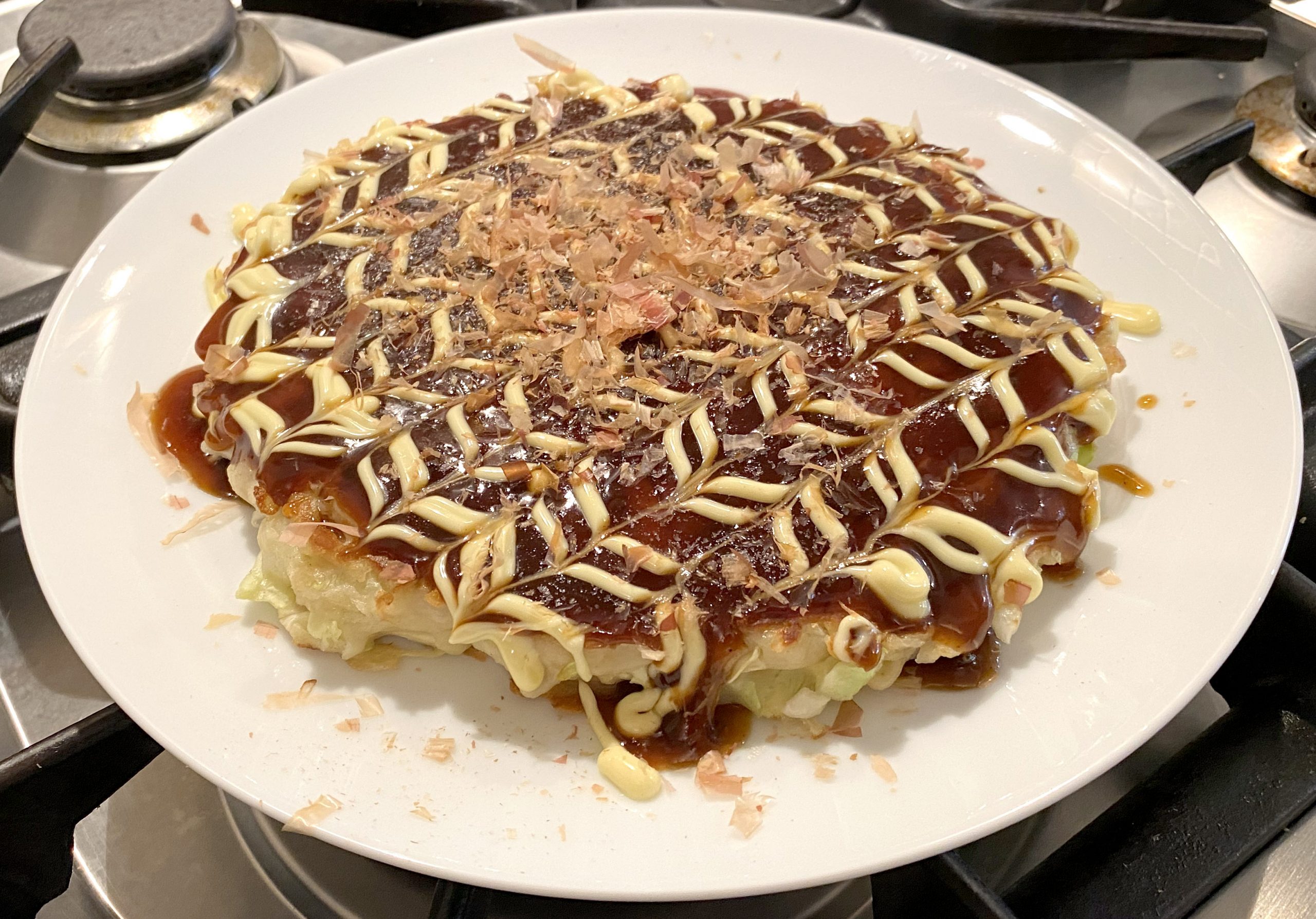
The final step
The last thing to do is sit down and enjoy it! Okonomiyaki is traditionally eaten with tiny metal spatulas. Although, some restaurants will give you regular spatulas to cut and serve the okonomiyaki with. You can then use chopsticks to eat it from your own plate.
Freezing Okonomiyaki
Okonomiyaki freezes really well! Just make sure you freeze it before adding any of the sauces. On the day that you want to eat it, leave it out to defrost completely. Add a little oil to a pan and heat it on the lowest heat, flipping it to heat both sides.
How did you like it?
Whether you followed this recipe out of nostalgia or if this is your first time making it, please let us know in the comments what your thoughts are! We are keen to hear “how you like it cooked”! Drop a comment below to let everyone know your spin on this classic Osaka dish!

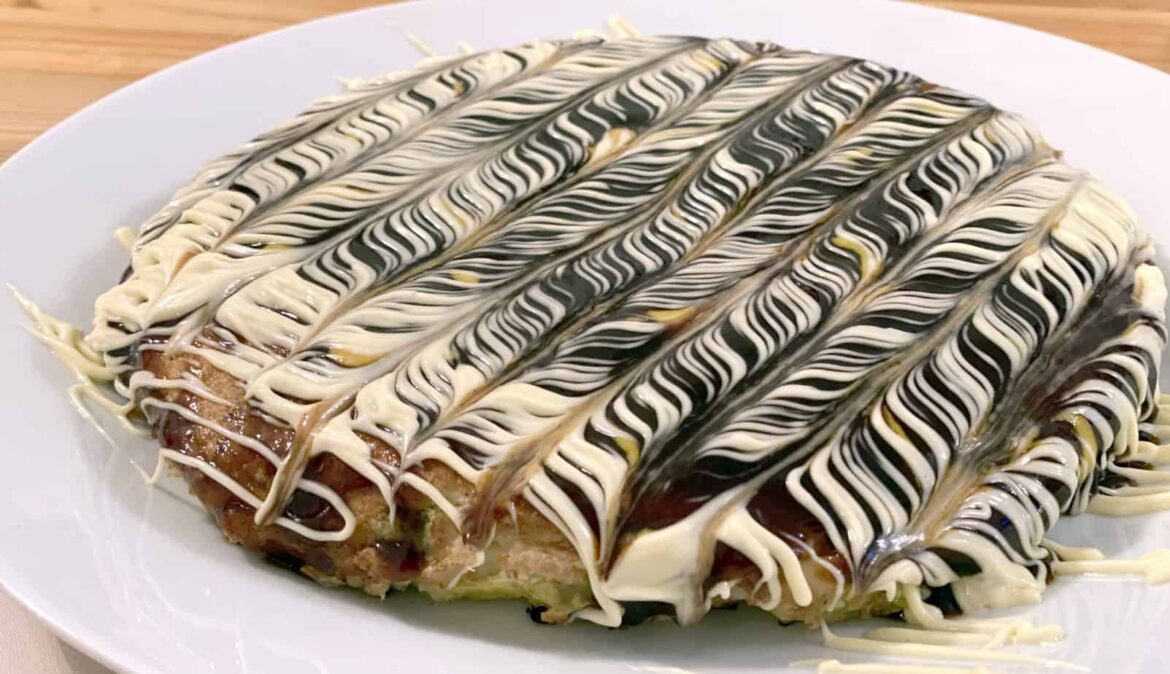
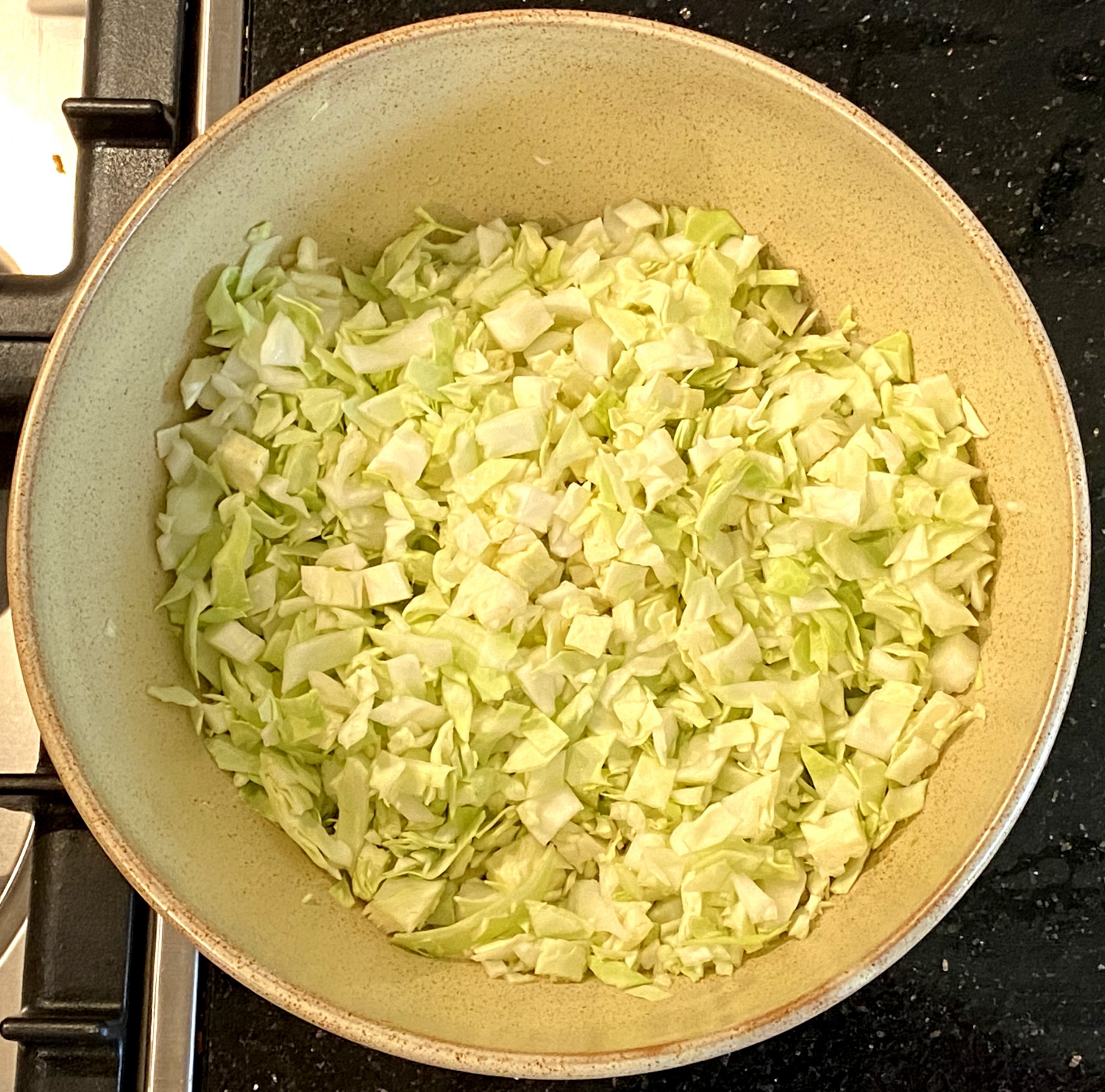
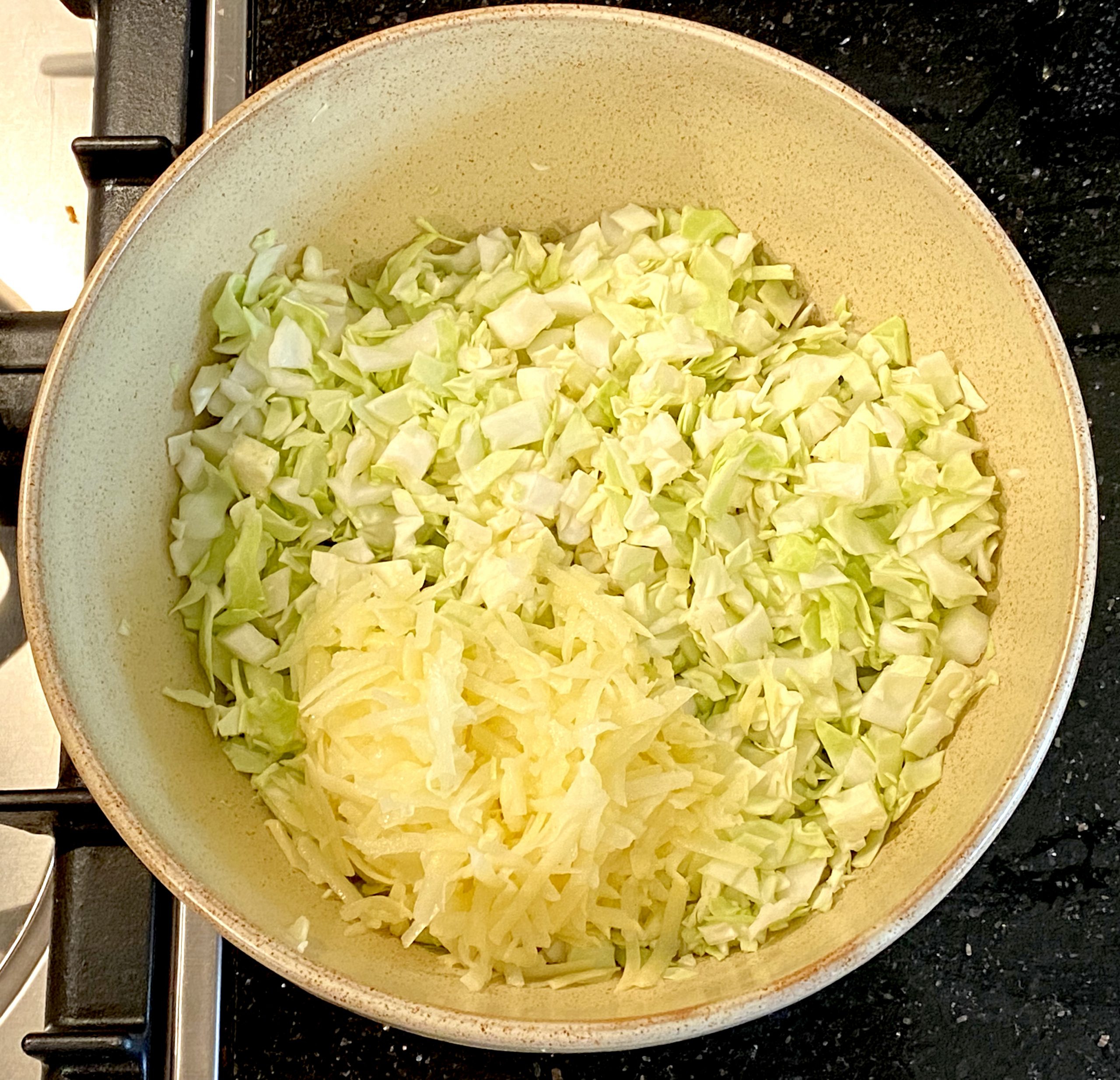
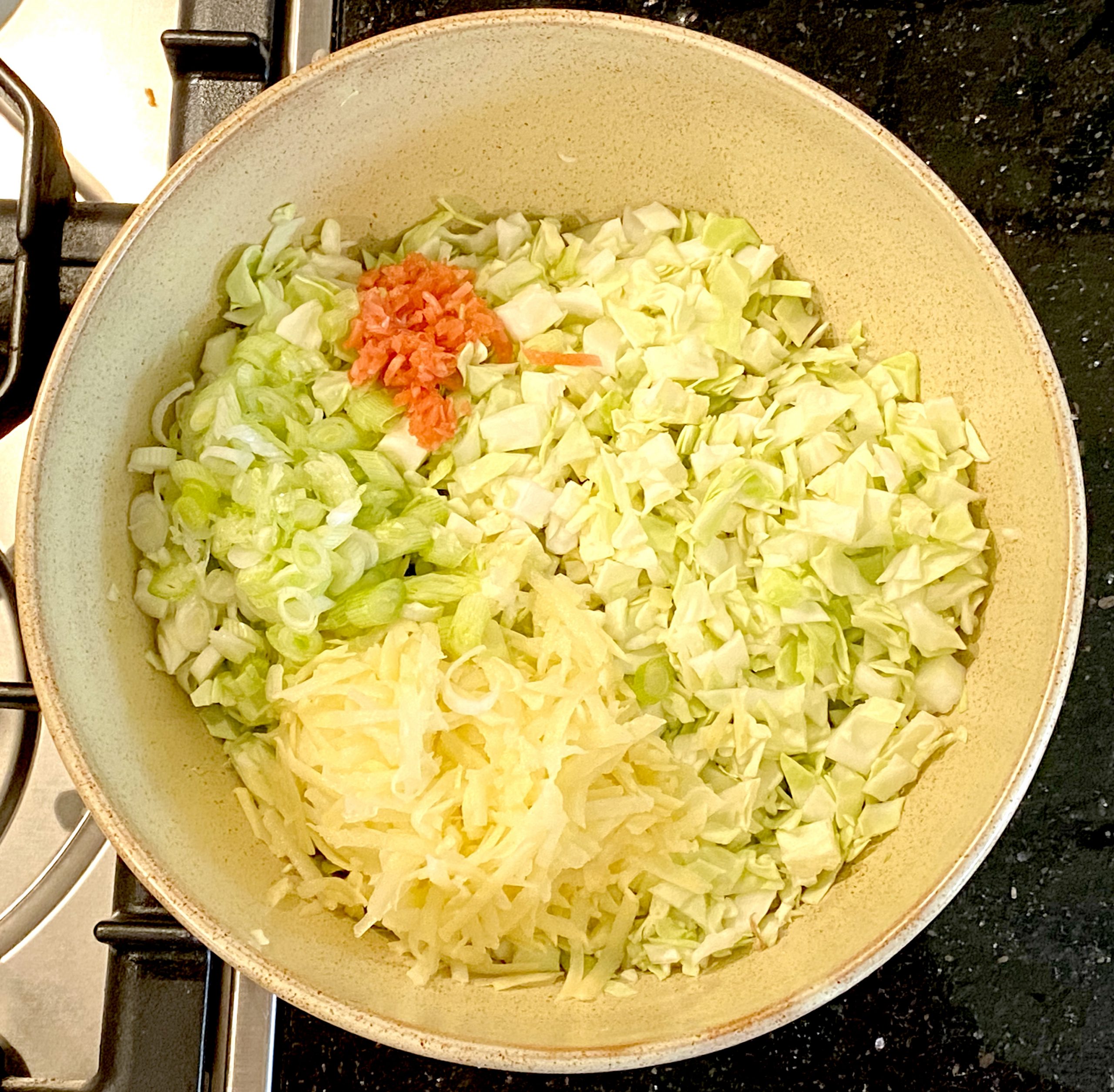
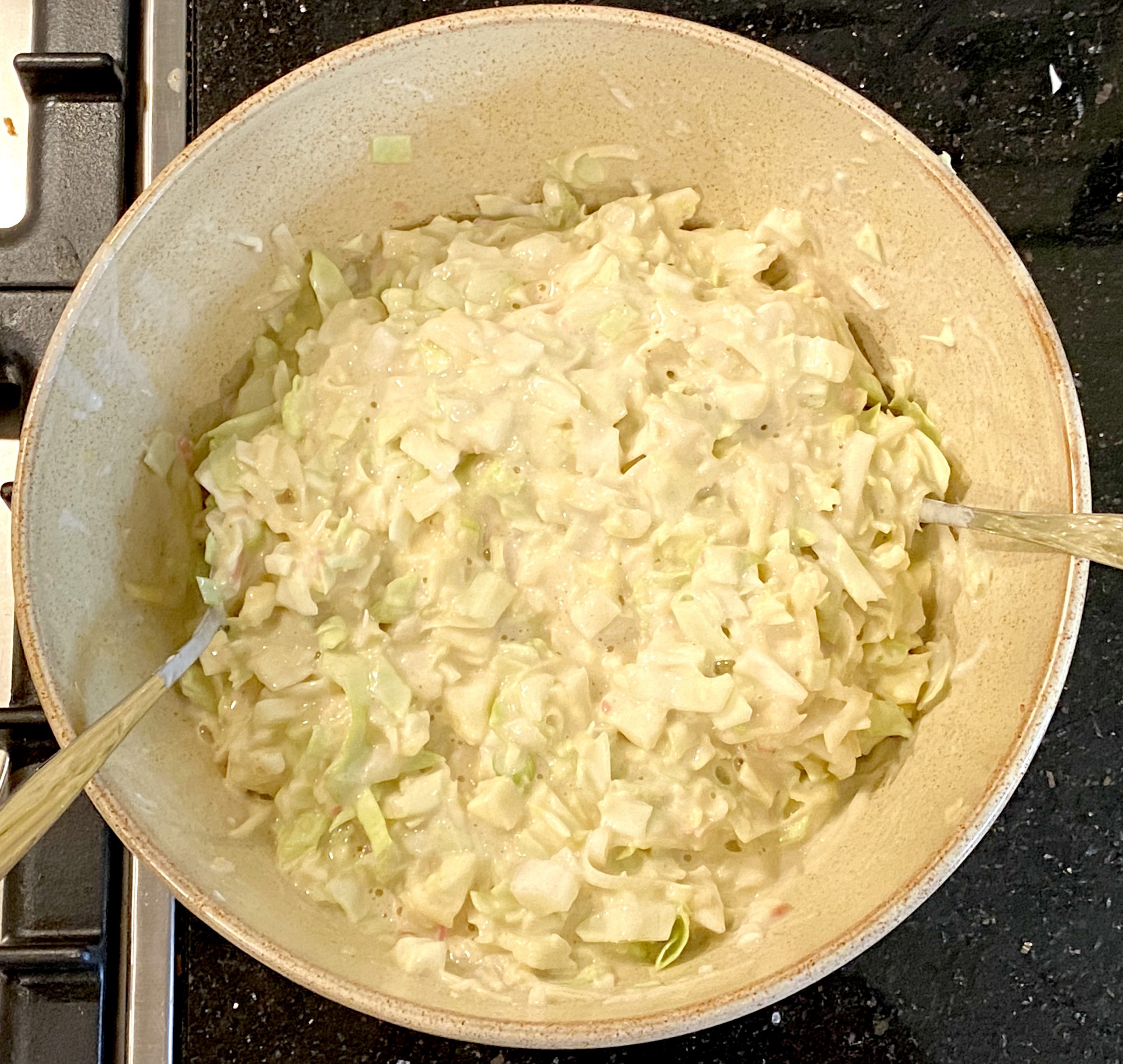
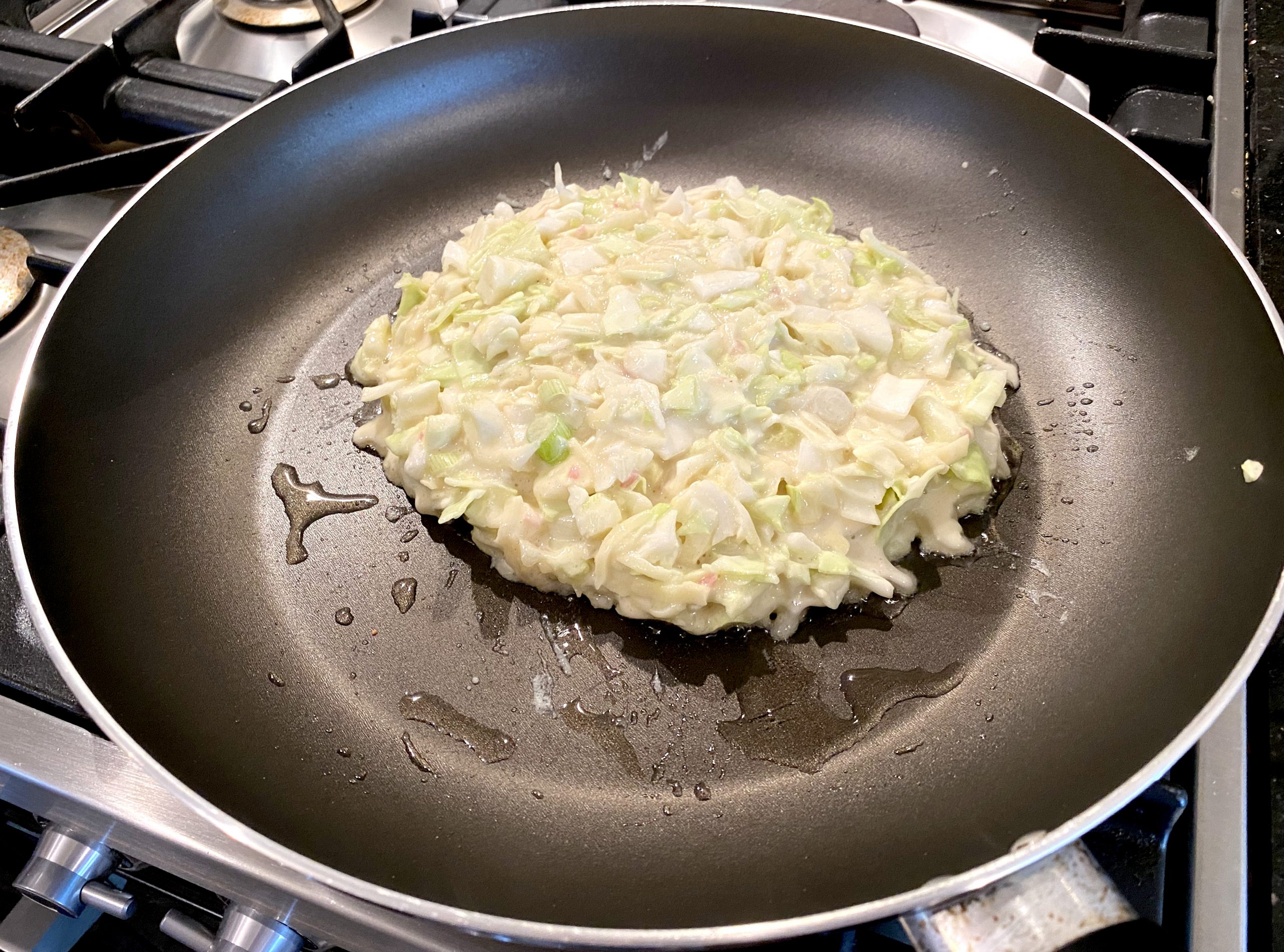
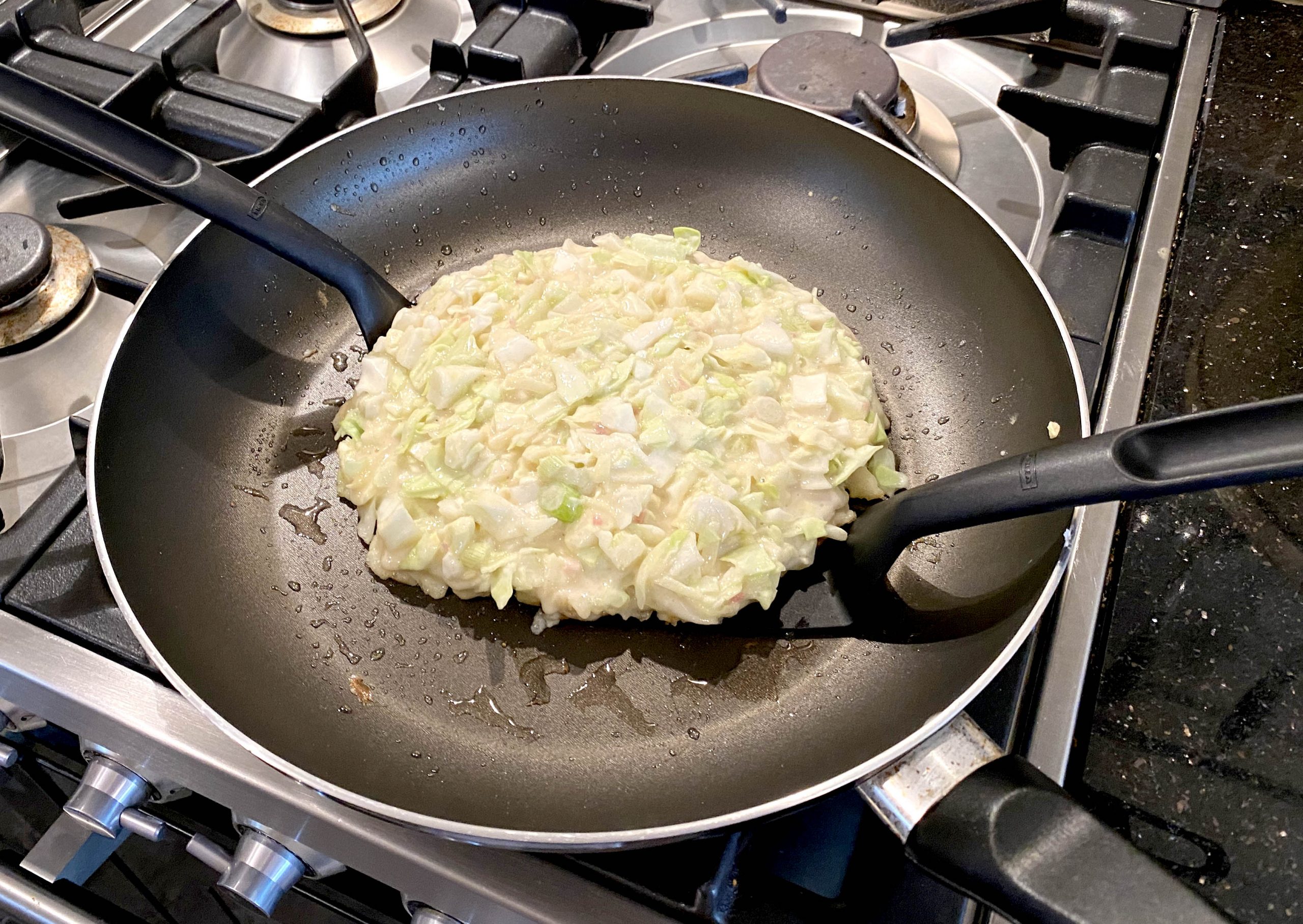
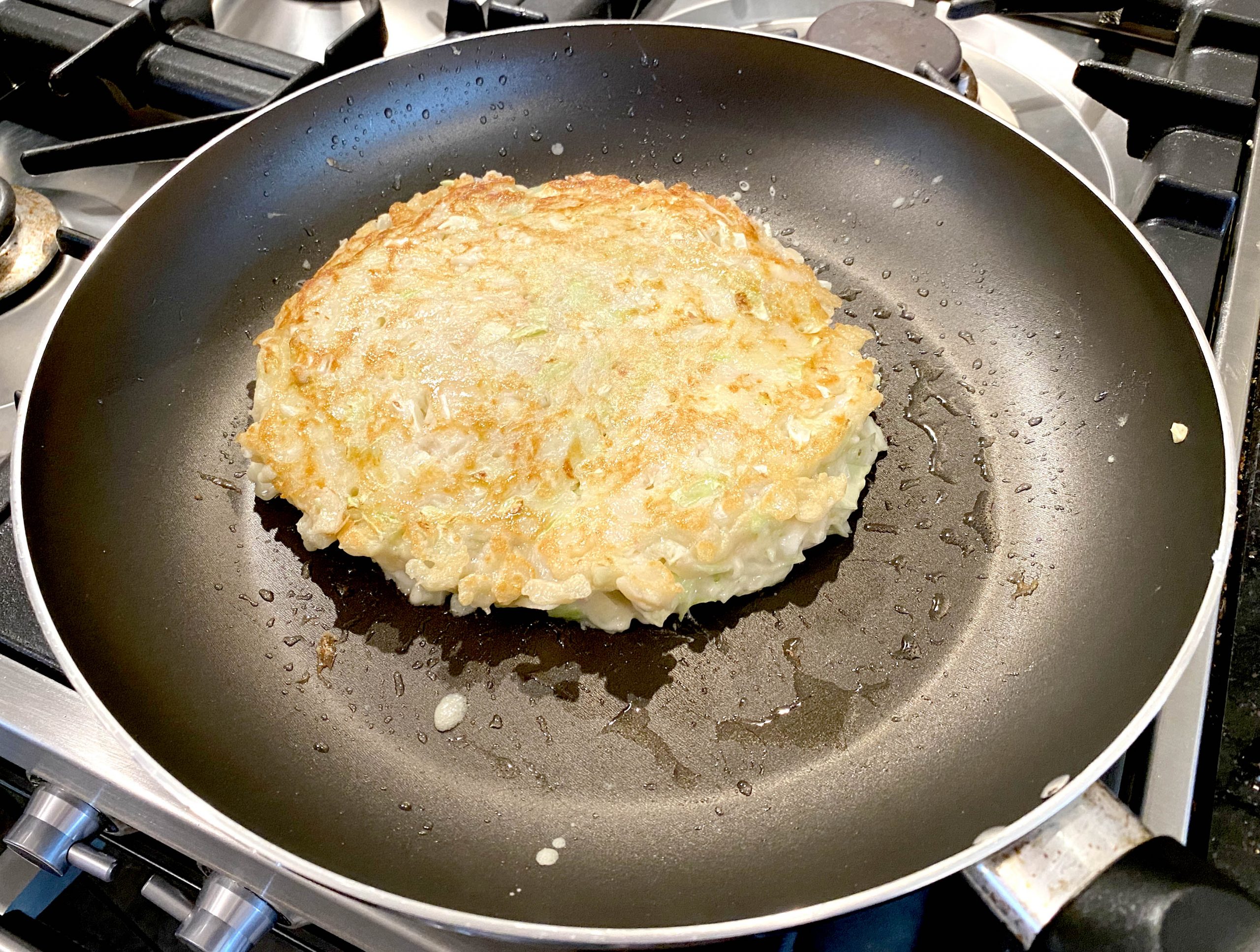
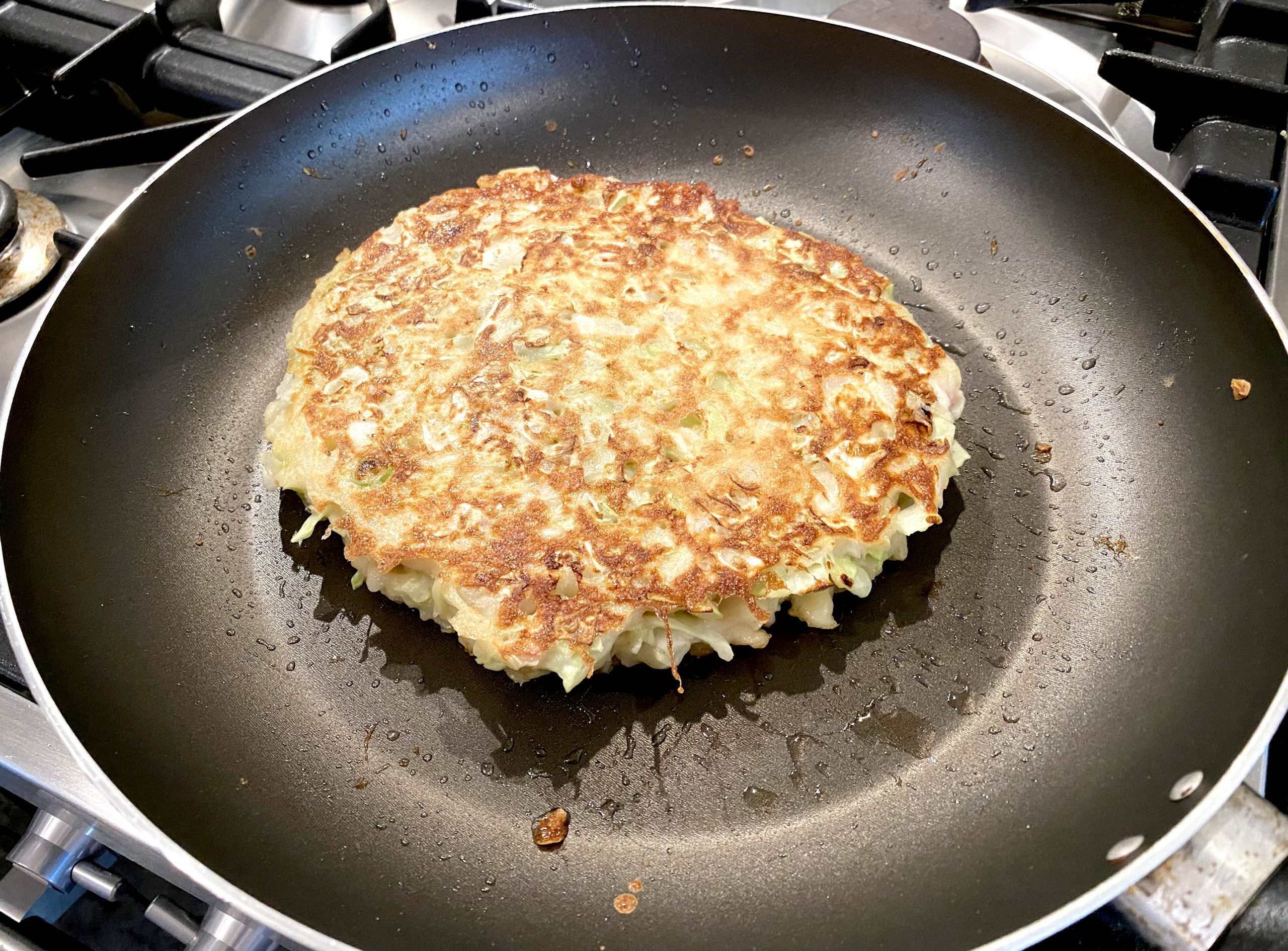
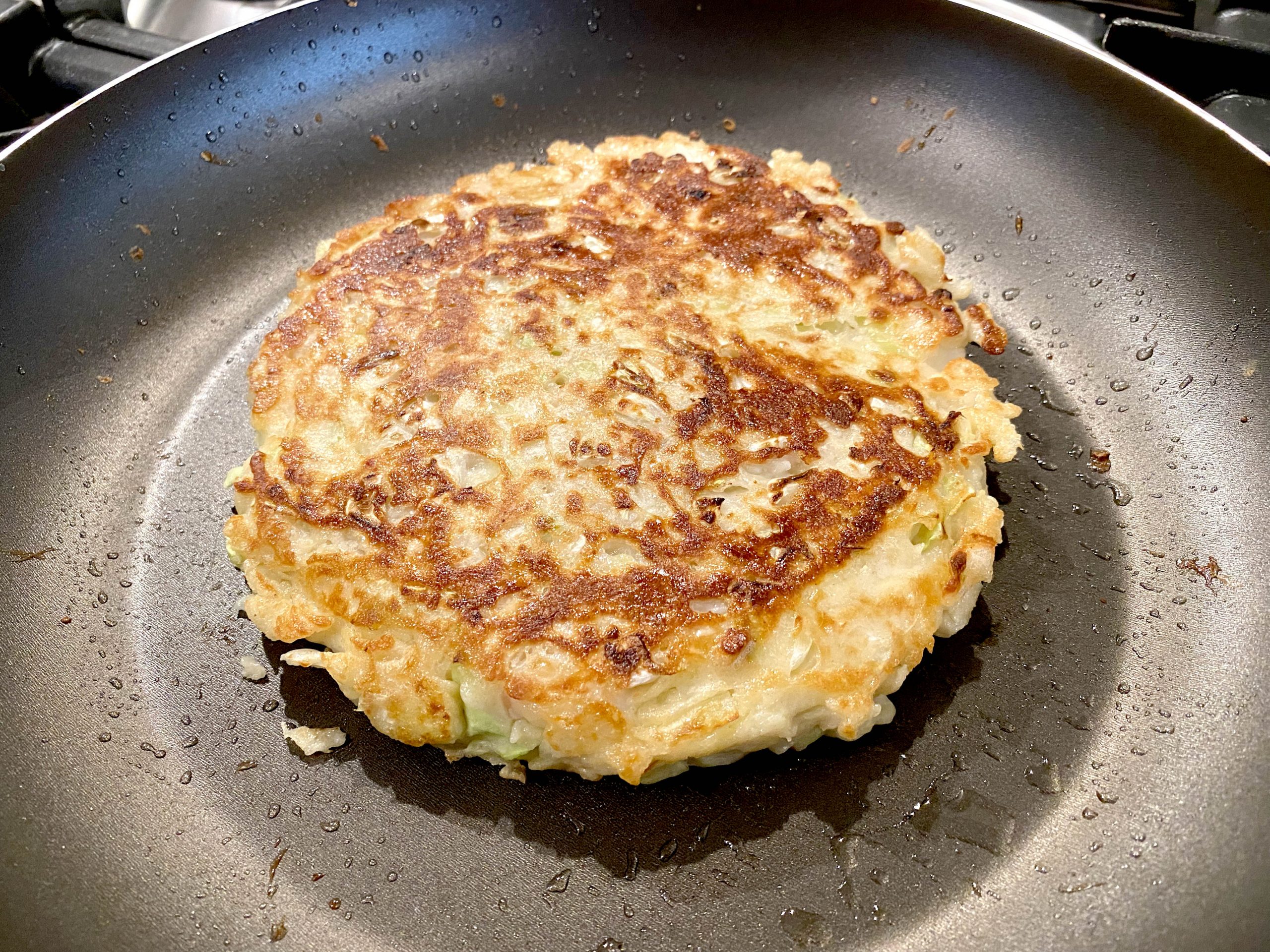
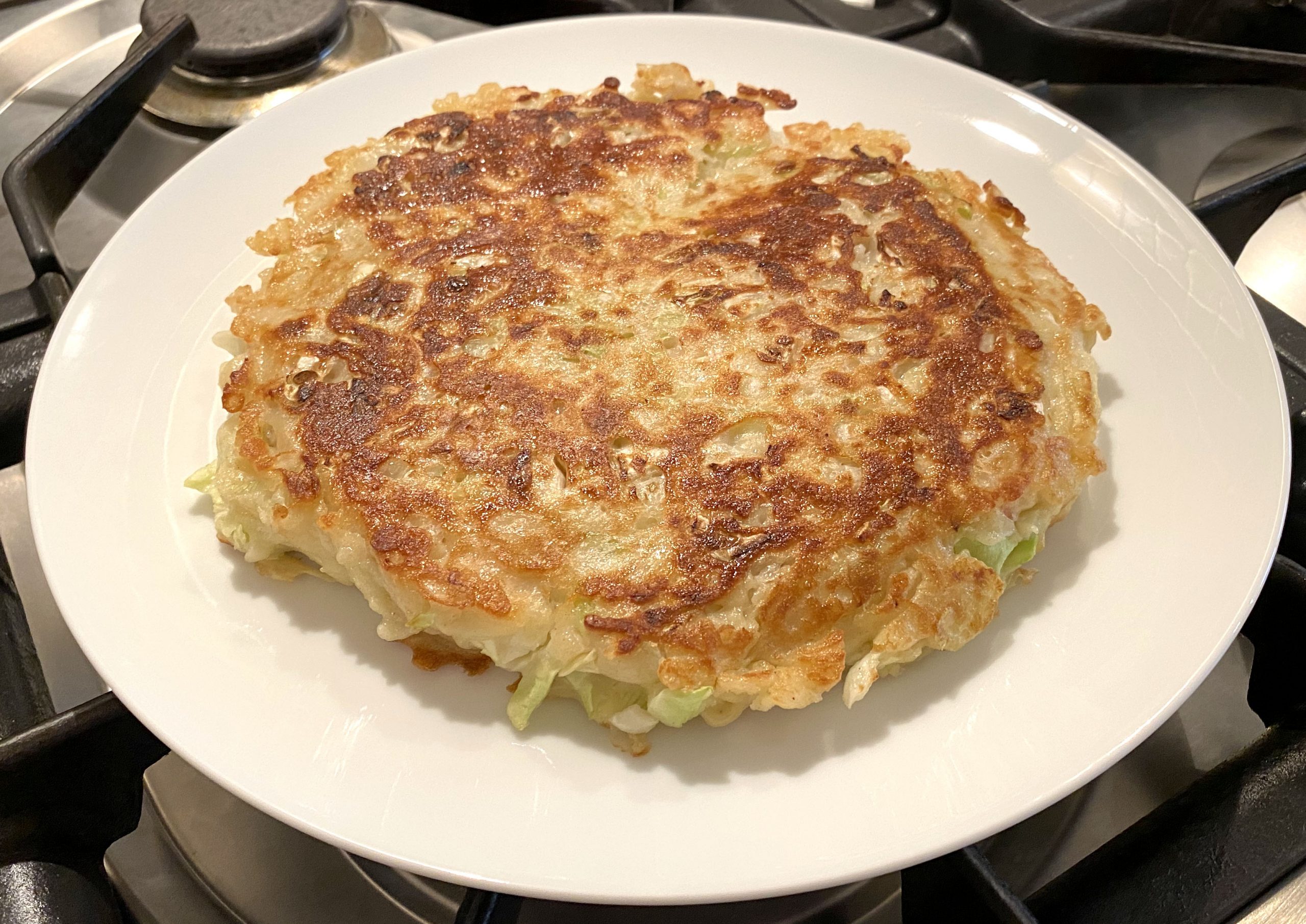
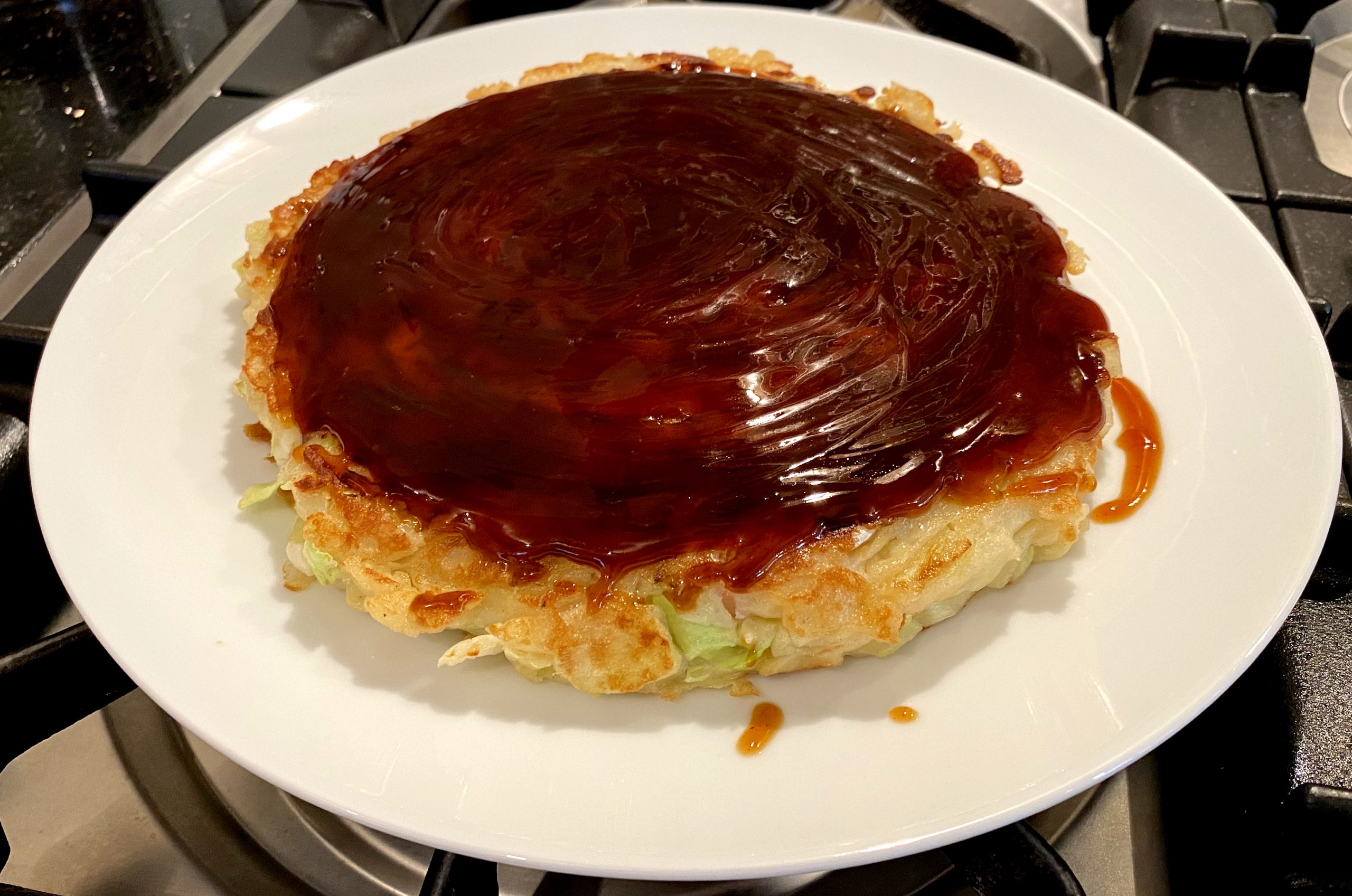
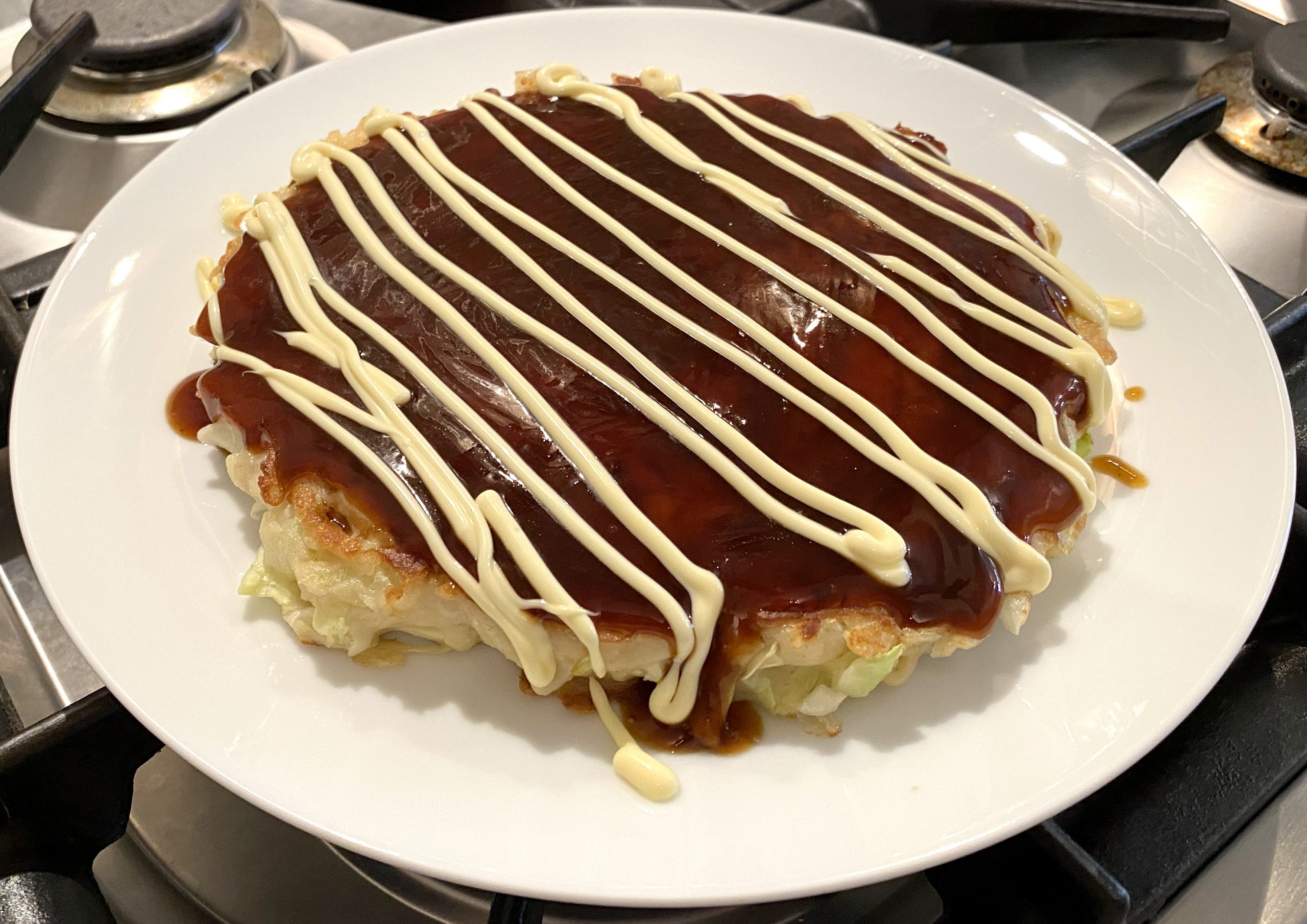
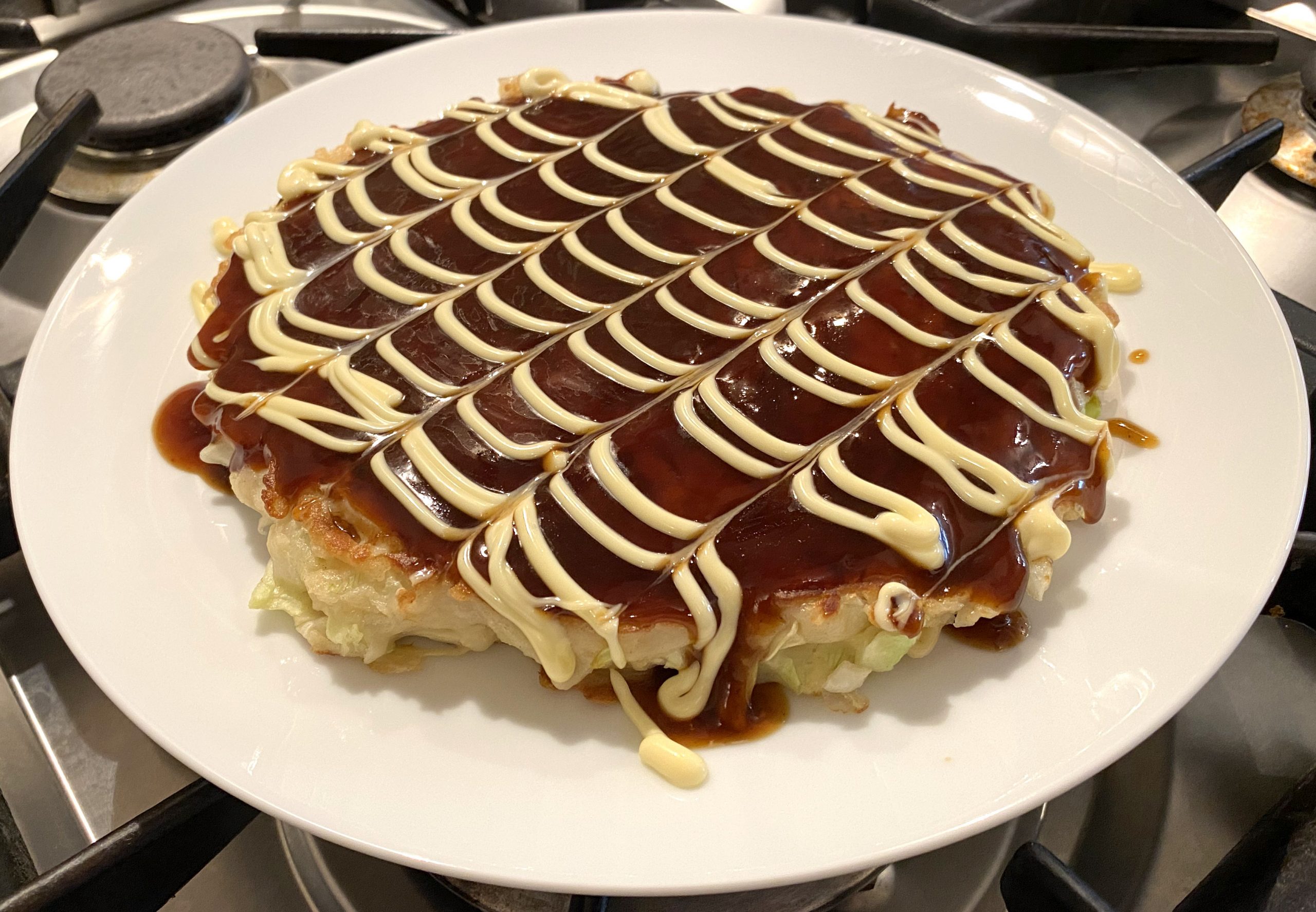
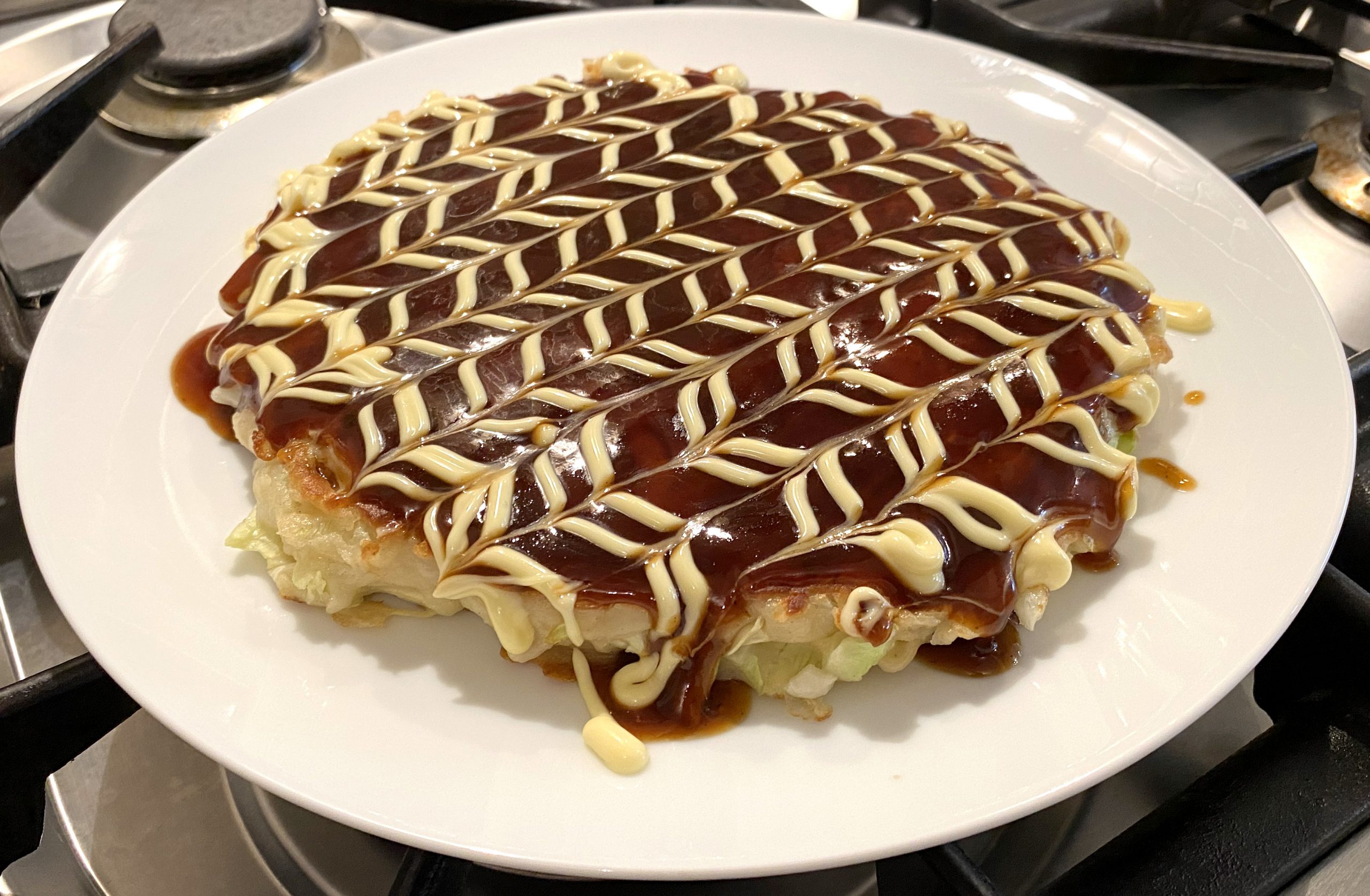

5 comments
[…] more recipes on the site and if you’re interested in making Okonomiyaki, check out our recipe here. Also, we’d definitely recommend following Kurumi on Instagram or her YouTube channel as […]
[…] What’s the first thing that comes to mind whenever Okonomiyaki is mentioned? […]
[…] the owners hails from. If you are not familiar with this Japanese savoury pancake, please read an explanation of Okonomiyaki along with our […]
[…] of our Bristol friends and a certain authentic Japanese restaurant next). Stay tuned for more Japanese recipes too and thanks for […]
Wow! It looks like the real thing! Thanks for the recipe! I’ll have to try it when I’m in the mood for Okonomiyaki. I’ll be adding soba noodles for Hiroshima style okonomiyaki!
Comments are closed.